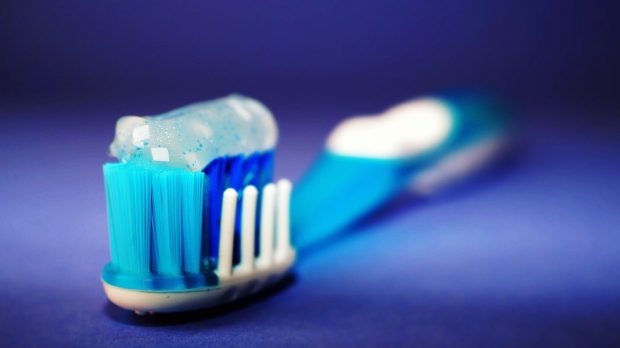When picking a toothbrush for braces, you may wonder whether a hard or a soft toothbrush is the better choice. Braces tend to require specific tools and specially formulated products to maintain, so making the right choice is imperative.
There’s a vast assortment of toothbrushes on the market, and your choice may depend on more than the softness or hardness of the bristles. It could extend to the toothbrush’s power source: would you need a manually-powered or a battery-powered option?
Today, we’ll look at tooth brushing in the context of wearing braces. That way, you won’t only know what type of toothbrush to pick, you’ll also know how to use it correctly on your braces.
Brushing With Braces
The usual side-to-side brushing motion is not recommended for brace wearers. The action keeps them from thoroughly brushing in-between brace protrusions, increasing the chance for bacterial buildup within those areas.
Brushing with braces means using only a small amount of toothpaste and brushing at an angle that allows you to cover hard-to-reach sections meticulously. Give each tooth individual attention, since braces can make it difficult for one to remove food particles stuck between teeth.
Brush thoroughly when you have braces to prevent bacterial buildup and tooth decay. Then again, before the actual brushing commences, you need to get your hands on the right toothbrush.
A Quick Look at Hard and Soft Toothbrushes
Choosing a toothbrush may depend on personal preference, which is why these products come in different types. Toothbrushes can differ based on size, shape, and bristle type, with bristles being an especially important consideration for those with specific dental care routines.
Your toothbrush’s bristles contribute immensely to teeth and gum care and bacterial buildup prevention. Thus, you mustn’t leave them out of the equation.
Hard Toothbrush
Durability is the biggest edge a hard toothbrush has over a soft toothbrush. Hard bristles are tougher and tend to last longer.
Like most people, you may think that moderate to hard bristles are better for cleaning teeth, but evidence suggests differently. Harder bristles could actually end up scraping away at the enamel, leaving teeth more vulnerable to foreign substances.
Remember that enamel cannot be replaced and, once damaged, can make teeth a haven for decay-causing microbes. The buildup of these bacteria could also potentially lead to gum damage, bad breath, and an unhealthy set of teeth overall.
Soft Toothbrush
Soft toothbrushes are gentler on the teeth and gums and more effective at removing plaque buildup. Their soft bristles are especially ideal for plaque and debris removal along the gum line and on your teeth. Even when you brush thoroughly, the bristles won’t be abrasive enough to erode enamel.
That said, despite how delicate a soft-bristled toothbrush is on your teeth, you still need it working in tandem with an excellent brushing technique. In that way, you can ensure it does its job as effectively and efficiently as possible.
Why Use a Soft-Bristled Brush on Braces
Soft-bristled toothbrushes are the right choice for brace wearers. As mentioned previously, hard bristles can potentially damage teeth and gums.
If you recently got your braces, the inside of your mouth could be sensitive, which makes hard-bristled toothbrushes even more aggravating. On top of that, stiff bristles can chip away at enamel and make it harder to recover from orthodontic treatment.
Brushing thoroughly using a soft-bristled brush brings results without damaging your teeth and dental accessory. It also won’t cause any kind of discomfort, so it would be as if you were brushing normal teeth.
In the event you choose an electric toothbrush instead of a manual one, go for an option with an orthodontic tip. This structural addition makes it easier to remove plaque buildup around the braces.
Whether manual or electric, your soft-bristled toothbrush has to be accompanied by the correct brushing technique for optimal effectiveness. Take note to also replace it regularly, so it continues to do its job.
When Should You Replace Your Toothbrush
Toothbrush replacement doesn’t occur as often as it should. When your toothbrush begins to show signs of wear and tear around the two- to three-month mark, that would be a good time to replace it.
The recommended soft-bristled toothbrush isn’t as durable as its hard-bristled counterpart, so keep in mind to replace it more frequently. Also, make sure to do so before the item ceases to be of use.
No matter the quality of your toothbrush, toothpaste, or brushing technique, neither will do any good if the bristles are worn down and dirty. You’d just be setting yourself up for reinfection if you continue using the item.
So, Which Toothbrush Should You Use for Braces?
Wearing braces requires you to spend twice as much effort on your oral care routine. That’s because the accessory provides more areas for food particles and plaque to get stuck in and accumulate.
To address this correctly and thoroughly, use a soft-bristled toothbrush in the right style and size for your specific oral care requirements. Work this in tandem with an excellent brushing technique and healthy dental practices, and you should have minimal problems caring for teeth with braces.
Read More:


